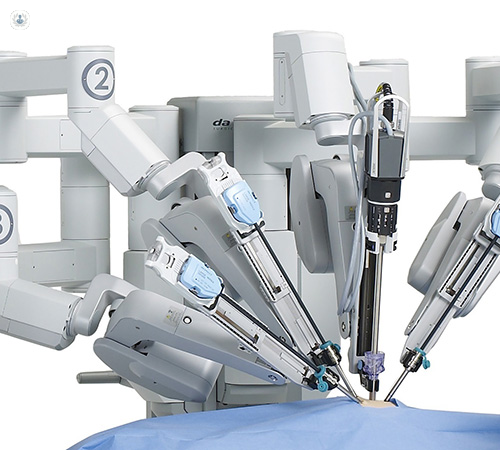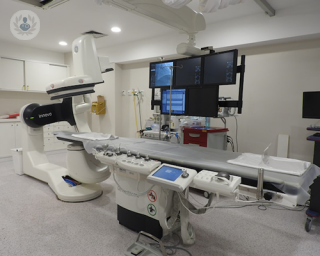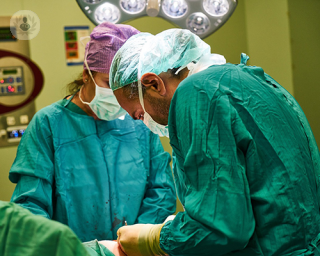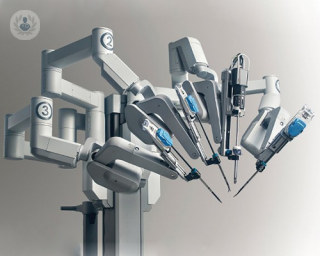Robotic surgery in urology
What is robotic surgery in urology?
Robotic surgery is a type of minimally invasive surgery which makes use of miniaturised surgical instruments guided by an advanced robot. It is a very advanced technique that allows the surgeon to perform surgical procedures in a very precise manner. This type of surgery is usually done under general anaesthesia.
The advantages of robotic surgery over traditional open surgery are related to the fact that there are smaller, more precise incisions, which translate into quicker recovery and less pain.
Moreover, higher precision means that urinary continence and erectile function are less likely to be compromised with robotic surgery than with other surgical techniques.

Why is it done?
More and more surgical treatments are becoming amenable to robotic surgery, due to the advantages it provides for the patient and the surgeon. Robotic surgery in urology is used in the treatment of prostate cancer (prostatectomy), kidney cancer (nephrectomy), bladder cancer, genital prolapse, urethral stenosis, and other pathologies.
What does it involve?
Robotic surgery is performed using specialised robots, such as the well-known da Vinci robot. Surgical instruments are fixed to the arms of the da Vinci robot and are manipulated remotely by the surgeon from a workstation, i.e. he does not have to be physically present in the operating theatre.
The robot reproduces the surgeon’s movements and eliminates the shakiness associated with human hands; moreover, manipulations impossible for humans, such as rotating surgical instruments 360º, are possible with the aid of a robot.
The surgeon visualises the procedure on a monitor with a stereoscopic visual system with 3D vision that allows them to perceive depth. The monitor image can also be enlarged.
How should I prepare for robotic surgery?
Even though robotic surgery is a minimally invasive technique, it is still possible that you may not be able to undergo a given intervention. Hence, certain medical tests as requested by your doctor and a review of your medical history are important in order to determine your health status.
It is also probable, depending on the surgery to be performed, that you may have to fast for several hours before the intervention.
What is recovery time like?
One of the main advantages of robotic surgery versus conventional open surgery is the rapid recovery. In many cases, patients are discharged on the same day as the intervention. In other cases, patients may remain hospitalised for around 24 hours. Generally speaking however, there is no particular postoperative care beyond the painkilling medication prescribed by the urologist.
What are the alternatives to robotic surgery in urology?
Robotic surgery entails a sizeable investment in equipment and in specific training for surgeons. For these reasons, it is not available at all medical centres. As alternatives, urological surgical procedures may be performed using conventional open surgery or ideally using minimally invasive techniques such as endoscopy or urological laparoscopy.
















